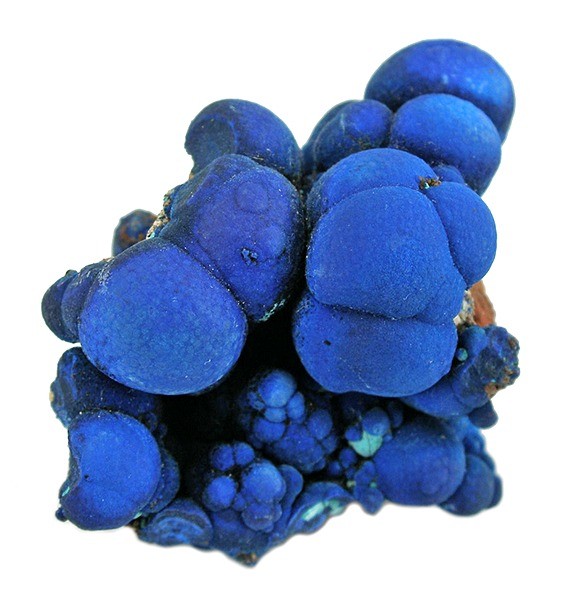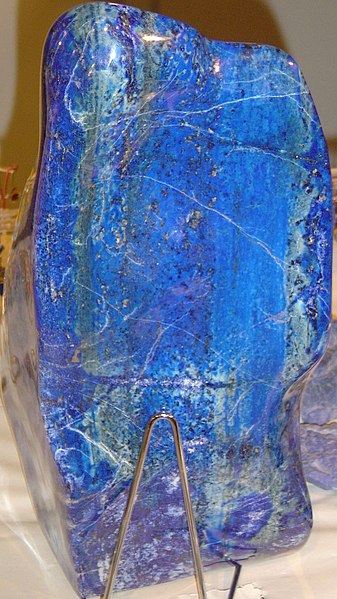 |
| Botrydoil Azurite from the Apex Mine of Utah. Photo by Rob Lavinsky |
Azurite
is one of the lesser known copper ores that is produced by the weathering of
copper deposits. The mineral is also known as chessylite named after the
Chessy-les-Mines near the city of Lyon France
Typically azurite crystals are monoclinic that when they
are large enough to be seen will appear is dark blue prismatic crystals.
In nature azurite crystals are massive to nodular with some of them forming
stalactitic masses. Any specimen of azurite over time will lighten in color as
its surface retrogrades in the malachite. The mineral is soft with a Mohs
hardness of 3.5 to 4. It displays a specific gravity
ranging from 3.77 to 3.89. The mineral azurite is destroyed by the application
of heat losing both carbon dioxide and water forming a type of black powdery
copper oxide. A drop of acid placed on the specimen will cause it to effervesce
like any other carbonate.
 |
| Azurite and malachite Photo by Rob Lavinsky |
Some of the earliest uses of azurite are a blue pigment in artist’s
paints. In this use it was finely ground, and then mulled with linseed oil and
turpentine. The mineral is capable of producing many different shades of blue
depending upon the fineness to which it is ground. When it is mixed with oil,
as in oil paints it turns slightly green. On the other hand if it is mixed with
egg yolk it turns a gray green. In older paintings the azurite has turned into
malachite displaying a greenish color. Many times what was azurite was
mislabeled as lapis
lazuli that in times past was a name that was applied to many other blue
pigments. True lapis lazuli that was used as another blue pigment came
primarily from Afghanistan Europe
in the same timeframe.
 |
| Lapis Lazuli, notice the difference in color from azurite. |
There were sizable deposits of azurite that were mined near Lyons ,
France Saxony
and the various silver mines that were located there.
If azurite is heated it turns black whereas the more
expensive natural ultramarine remains blue when it is heated. If the mineral is
gently heated it produces a deep blue pigment that is often used by the Japanese
in some of their painting techniques.
 |
| Azurute surrounded by malachite. Photo by Rob Lavinsky |
Occasionally azurite finds uses beads and other types of jewelry;
it is also used as a decorative stone. The thing that keeps it from being used
more commonly as a gemstone is its softness and the fact that it weathers
easily reverting back to malachite.
.
Thank you for your explanation of about Azurite stone. I feel I have a better grasp of how to wear it. I bought some and had them wrapped in silver.
ReplyDelete